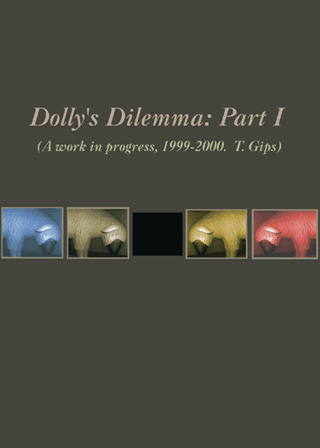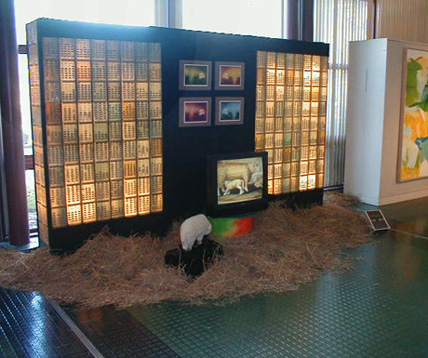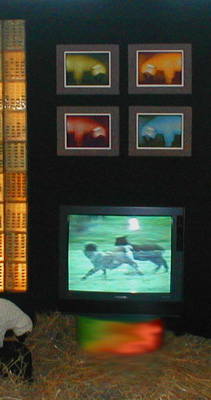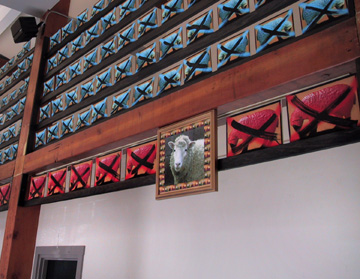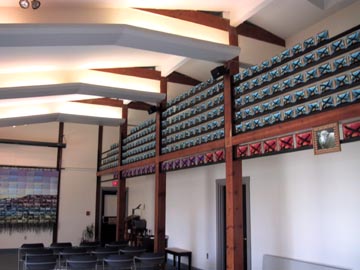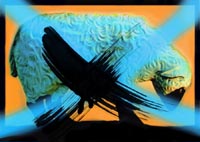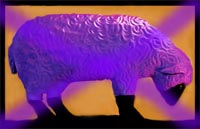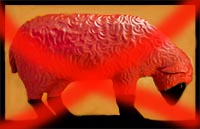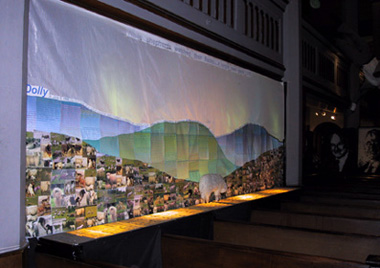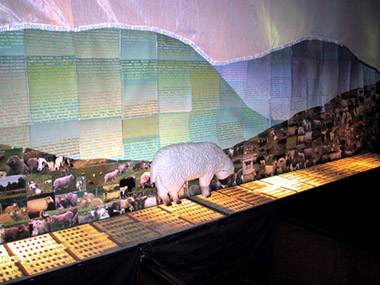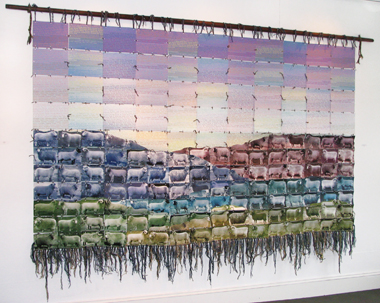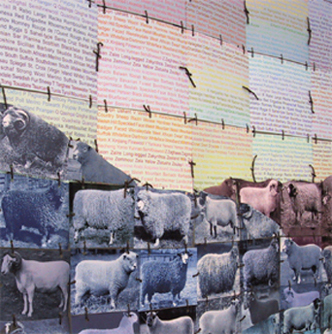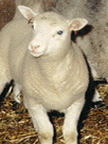 Note: The information on this page was compiled and initially posted in the late 1990's. Much work has been done on cloning of various animals since then. Many advances have occurred in technology along with debates on the ethics and morals of cloning various animals including humans. Therefore, this information should not be considered as current or consistent with today's practices and views.. Note: The information on this page was compiled and initially posted in the late 1990's. Much work has been done on cloning of various animals since then. Many advances have occurred in technology along with debates on the ethics and morals of cloning various animals including humans. Therefore, this information should not be considered as current or consistent with today's practices and views.. 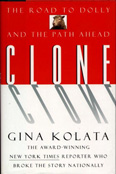
<<<back to all sheep projects |
How the DOLLY PROJECT came to be.
The
Dolly Project grew out of my involvement with computing and cyber
culture which begin in the
mid-eighties. I taught my first courses in digital imaging and
made my first digital art in 1985. I became interested in both
the conceptual ideas of computing and the physical tools--the hardware.
The power of computers to create new images and also to modify
and manipulate existing ones is now very old news, but it was a
radical departure from traditional image-making in 1985.
My
first body of work, The
Architecture and Memory Series, consisted of digitally processed photographs, as well as critical
writing and presentations. On the one hand, it seemed that computers, due
to their capacity to record and store vast quantities of information,
could enhance, extend, and stabilize human memory. On the other hand,
it became clear that the opposite might also be true. As we came
to increasingly use and rely on computers, the issues of information-overload,
depersonalization, memory crashes, etc., tempered blind enthusiasm
for technology. The second project I worked on through the mid-nineties resulted in several variations
of performance and installation. Titled Mnemosyne's
Dream, it was a
further exploration of memory. It also looked at relationships between
the tangible world of nature, things, and bodies and the cerebral
world of computing.
In
the mid-nineties, after the coming of broad access to the Internet,
email, and then the World Wide Web, questions of identity overtook
those of memory in my work. It was not only information and images
(also sounds)
that could be easily modified with computers, but also our own identities.
We could choose to "be" different individuals in the online
world and we also saw the graying of the borders between human and
machine as technology penetrated the body. Pacemakers and mechanical
prosthetics, for example, made cyborgs out of individuals who most
likely were not aware of the larger implications of these medical advances.
Artists, scientists, and of course science fiction writers, knowingly
transgressed the borders between biological and mechanical as they
investigated the future of cybernetics and biology.
Humans
and other animals were not only changed by mechanical and electronic devices,
but they also were increasingly the objects of genetic manipulation. Origin
and identity were suddenly terribly vulnerable. Dolly, the cloned sheep,
was unprecedented, because she was cloned with cells from an adult animal.
When the news of Dolly hit the press in 1997, my attention--like that
of much of the world--was snagged. I knew that I wanted to make art in
response to Dolly. |
HI-TECH
VS. THE IDYLLIC
It's
relevant to report that I grew up on a farm and that I
moved back to the country, living in rural Vermont from 1974-84.
I had a handful of sheep for a few years and came to know first-hand
their behaviors, stereotypes, and association with the pastoral.
Beyond this brief shepherding encounter, I also admit to being enamored
of idyllic landscapes speckled with flocks of sheep. Therefore, when
I began making art about a particular sheep named Dolly, I decided to
juxtapose this hi-tech specimen with the humble creature that has played
a role in human culture for about ten thousand years. The irony
of this rustic animal becoming the emblem of futuristic biology made
Dolly an excellent subject for examining the promises and the problems
of cloning.
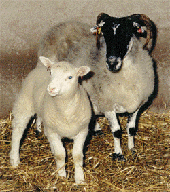
Dolly & surrogate mom
Dolly
was an ordinary looking sheep. She had no outward signs of
her parthogenetic, or virgin birth. Nor would you know by touching her
wooly fleece that she was the one live outcome of 277 laboratory trials.
A central piece of my Dolly Project, 277
to 1: The Cloning of Dolly, is a "diagram" of the experiment carried out at the Roslin
Institute in Scotland: it lays bare a key aspect of cloning for all
to see. It consists of 276 images of a plastic sheep that have been
digitized, "artificially
colored," and
slashed with hand-painted black "Xes" to indicate their
non-survival. In
contrast to these 276 unframed images is a triumphant portrait
of Dolly in an ornamented gold frame.
The second
large work in the Project, While
Shepherds Watched..., is a tapestry-like wall hanging
that also speaks to the unsettling issues of cloning. In this case, ethical,
religious, agricultural, environmental, and genomic diversity issues make
their way to the surface.
Additional works in this project include "portraits"
of sheep done as monoprints, color photographic prints, quilt-like mixed
media pieces, and a series called "sheep clothing" which are assembled and
stitched from paper, wool yarn and other materials. |
Resources on the Cloning of Dolly and the Ethics of Cloning
The Roslin Technique
http://library.thinkquest.org/24355/data/details
/techniques/
roslin.html
Animation of Roslin Technique
http://library.thinkquest.org/24355/data/details/media/oslinanim.html
Moving Toward the Clonal Man:
Is this what we want? by James D. Watson May 1 1971
http://www.theatlantic.com/magazine/archive/1971/05 /moving-toward-the-clonal-man/305435/
Send in the Clones, by Sean Henahan, Access Excellence
http://www.accessexcellence.org/WN/SUA09/clone297.php
The Road to Dolly and the Path Ahead: Clone by Gina Kolata
New York: William Morrow and Company, 1998
How Cloning Works by Craig Freudenrich, Ph.D.
http://science.howstuffworks.com/life/genetic/cloning3.htm
Cloning After Dolly: Who's Still Afraid? by Gregory Pence, Rowman & Littlefield Publishers, Inc., 2004.
Bioethics, Stem Cells, and Cloning,
updated by Maria Mergel (Mar 23, 2011)
http://www.toxipedia.org/display/toxipedia/Bioethics%2C+Stem+Cells%2C+and+Cloning
Michigan State University Library suggested sources:
http://staff.lib.msu.edu/skendall/cloning/ethics.htm |
The Cloning of Dolly: Facts and Ethics
(as they have been made public through the media)
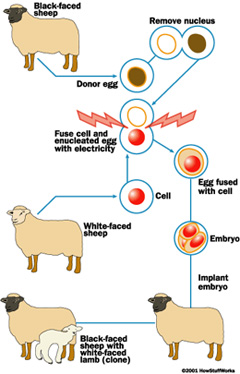
http://science.howstuffworks.com/life
/genetic/cloning3.htm
- Dolly, a Finn Dorset sheep, was born on July 5, 1996 at Roslin Institute, a research center located near Edinburgh, Scotland
- Dolly was the first mammal known to be cloned from an adult of the species. In this case, a cell taken from the mammary gland of a 6 year old Finn Dorset ewe was cloned through a technique known as nuclear transfer.
- The cloning process began with the extraction of 277 separate mammary cells from a Finn Dorset ewe. These cells were "starved" for five days in the lab so that they would go into a suspended or quiescent state. This was necessary so that their "identity" as mammary cells would be turned off and the DNA susceptible to reprogramming once they were fused with egg cells.
- Simultaneously, oocytes or reproductive egg cells were removed from another female sheep, (in this case, a ewe of a different and easily distinguishable breed, a Scottish Blackface).
- The nucleus from each of those oocytes was extracted in the lab. It is the nucleus that contains the genetic material that would normally determine the characteristics of the offspring. These unfertilized and genetically empty Scottish Blackface egg cells were then ready to be "fertilized" with the genetic material from the Finn Dorset mammary cells.
- Next, the 277 enucleated egg cells were fused with genetic material from the mammary cells.
- Electric current was applied to the eggs to simulate the burst of energy that occurs during normal fertilization and to begin embryonic develpment.
- Of the 277 fused egg cells only 29 embryos survived. Of these 29, only 13 were successfully implanted in the wombs of Blackface ewes.
- 148 days after fusion, i.e., laboratory fertilization, on July 5, 1996, Dolly was born from one of the surrogate Blackface ewes--the single successful outcome of 277 attempts to clone.
- The story of Dolly's birth as the first clone of an adult mammal was released to the public the following February when Dolly was a little more than 6 months old.
|
 Note: The information on this page was compiled and initially posted in the late 1990's. Much work has been done on cloning of various animals since then. Many advances have occurred in technology along with debates on the ethics and morals of cloning various animals including humans. Therefore, this information should not be considered as current or consistent with today's practices and views..
Note: The information on this page was compiled and initially posted in the late 1990's. Much work has been done on cloning of various animals since then. Many advances have occurred in technology along with debates on the ethics and morals of cloning various animals including humans. Therefore, this information should not be considered as current or consistent with today's practices and views.. 
